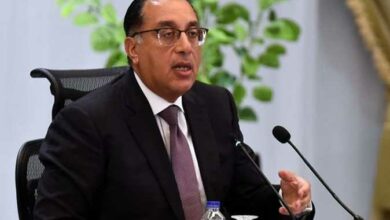When the Haitians will have received their life-saving emergency food, water and health care, the world must invest in adequate risk reduction for this disaster ridden nation. Or do we want to continue to administer expensive band-aids every five years for the rest of this century?
In every big disaster the same things happen: There is too much focus on international relief, while local efforts and national preparedness are largely ignored. The thousands rescued by community activists remain unregistered – those saved by international groups produce global headlines. The many graphic stories of victims receiving or not receiving external aid overshadow the main lessons from Haiti, from the tsunami and from Hurricane Katrina: most lives, limbs and livelihoods were lost needlessly. Simple preparedness and prevention measures agreed by nations at the 2005 World Conference on Disaster Reduction have already saved countless lives in other Caribbean islands and elsewhere. But we have failed to give the people of Haiti their first line of defence against recurrent hurricanes, floods, mudslides and earthquakes.
In each catastrophe, the world is shocked that aid that can be in the air from donor nations within hours can take a week or more to go through all the bottlenecks and reach hundreds of thousands of people trapped in the midst of damaged infrastructure. Journalists often exaggerate insecurity and looting in the midst of the catastrophe and aid workers the fear of epidemics. Abject pre-disaster mortality rates, disease and criminality are often forgotten.
In the intense real-time coverage of the emergency phase, there is much coverage of individual relief flights and projects among the hundreds of parallel efforts. Uninformed judgements about huge national and international relief efforts are made on the basis of a few symbolic cases. Many also believe, wrongly, that military assistance is controversial in natural disasters.
The earthquake in Haiti earthquake devastated not only one of the poorest societies on earth and a city of millions originally planned for less than 100,000. It also affected much of the two most important command centres for relief: the Haitian central government, which by definition should lead the national emergency effort, and the United Nations in Port-au-Prince, which is tasked with coordinating international assistance.
Emergency relief operations are always followed by independent evaluations and audits. After the tsunami in 2004 and the Pakistan earthquake in 2005, the emergency relief effort was generally judged to have covered immediate needs and allowed rapid initial recovery activities. However, the Tsunami Evaluation Coalition concluded that the international response was most effective “when enabling, facilitating and supporting local and national actors” and that international actors were less successful in their recovery and risk reduction activities than they were in the relief phase.
I fear we may yet again fail to draw the right lessons from the tragedy in Haiti. As is well documented, international emergency relief is one of the few well-organized sectors within international relations. Within hours of the emergency, the first UN relief coordination teams had been sent to Haiti, and ten million US dollars had been allocated from the UN-managed Central Emergency Response Fund to jump-start life saving relief. During the first days, a hundred international relief groups were organised within a dozen functional operational teams working on aid from water and sanitation to food and logistics.
But international emergency relief is always too late for the tens of thousands who die needlessly in unsafe public buildings and apartment blocks. And it cannot cope with the initial wave of hundreds of thousands of physically and mentally traumatized people. Those affected in this earthquake were already extremely vulnerable, living in poverty in an overcrowded environment, where no one had invested adequately in disaster prevention. For decades now, we have allowed disasters to take many times more lives in Haiti than in similarly exposed Caribbean or other developing nations.
All evaluations prove that it is the degree of investment in development and prevention that determines how many or how few fellow human beings loose their lives, limbs and livelihoods. So the main question is not whether too few helicopters were allocated in the first five days, but whether we want to return every five years of this century with emergency relief – or help Haitians protect themselves from natural hazards.




